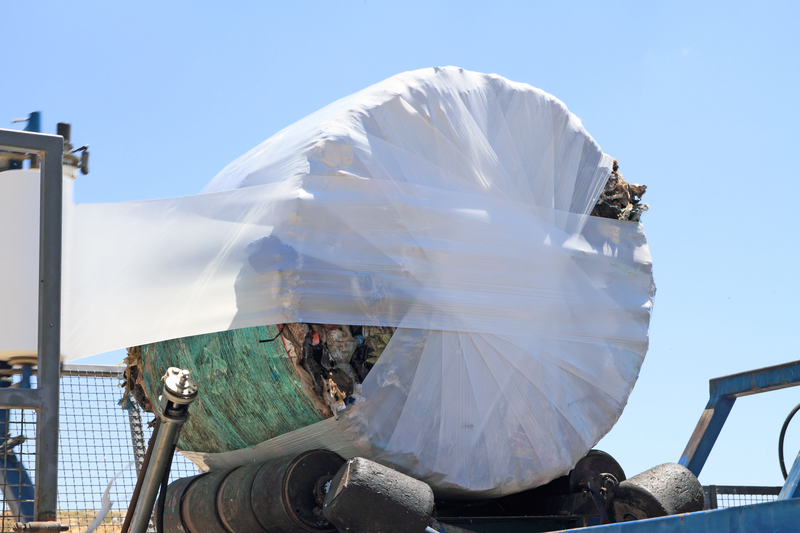Disposing of Hazardous Building Materials Safely
Posted on 14/09/2024
When faced with a hazardous building materials situation, the key concern for all involved parties should be safety. Hazardous building materials, which include anything from asbestos to lead-based paint, can be dangerous if not handled and disposed of correctly. In this article, we'll discuss how to dispose of hazardous building materials safely. We'll cover the importance of properly identifying any hazardous material present in the building, proper disposal methods, safety tips to follow, and regulations that could affect hazard disposal.
What Constitutes a Hazardous Building Material?
It's important to first identify what classifies as a hazardous material before discussing how to dispose of it. Hazardous building materials are defined as any product or substance that poses a health hazard or environmental risk. Common hazardous building materials include asbestos, lead-based paint and solvents, toxins, oils, cleaners, and radioactive materials. Any material found within a structure that is known to present potential health risks should be handled with care and promptly removed from the premises.

Properly Identifying Hazardous Building Materials
The most effective way to dispose of hazardous building materials is by properly identifying them in the first place. Since some hazardous materials may not be easily visible on the surface Take the time to assess each area carefully and document any hazardous material you find. If necessary use testing methods such as air sampling to identify hidden sources of exposure. Professional testing services can also be consulted to ensure accurate identification of any hazardous material your team may encounter. Once identified, note any relevant information regarding type and location of the hazardous material so that it can be properly remediated according to safety protocols established by local and state regulation agencies governing disposal practices.
Appropriate Disposal Methods
After identifying hazardous materials it's important to know how to handle these items in a safe manner. According to OSHA standards for handling hazardous waste "containers must be labeled with an appropriate identity for their contents including physical hazards and associated warning tags must be placed on the containers when necessary." Depending on the condition of the material being disposed off professional removal services may need to be used for troublesome items like asbestos or lead-based paint in order to ensure proper containment and reduction of risk. Additionally contacting local or state government offices for advice on correct disposal techniques should also be considered prior to disposing off any hazardous waste in order to avoid legal repercussions for improper waste management procedures.
Safety Tips When Handling Hazardous Materials
When it comes time for actual removal of any discovered hazardous material following safety tips helps keep everyone involved safe:
o Always wear protective gear such as respirators, gloves, goggles etc., when removing or transporting hazardous material
o Follow special instructions given by disposal service workers regarding appropriate handling techniques
o Avoid contact with skin while moving or disposing off hazardous materials
o Never allow children near hazardous waste sites
o Avoid breathing in fumes generated by hazardous waste during removal process
o Do not attempt mixing chemical compounds when disposing of hazardous materials
o Ensure proper labeling on storage containers storing hazardous substances
Following these steps ensures a smooth disposal process while minimizing risks associated with these types of operations. It is also important too ensure anyone else working at the site is properly trained on how to handle and dispose off these hazards properly. Keeping workers informed ensures a safe work environment for all team members involved in getting rid of potentially dangerous building materials.

Government Regulations Surrounding Hazardous Building Materials Disposal
The EPA (Environmental Protection Agency) has set specific regulations governing how different types of ash can be disposed off in ways that reduces harm towards human health and the environment including regulations dealing with landfills and incineration plants accepting such toxic waste streams. It is recommended you check out local and state regulations before attempting any type of large scale demolition operation requiring removal of toxic elements from buildings as failure too comply with laws regarding this subject could result in hefty fines or other legal action taken against responsible parties involved in such activities. The EPA provides detailed information about applicable federal regulations on their website for reference purposes allowing those involved in disposing off such substances quick access too resources required to make sure their operations do not violate federal law.
Conclusion
The process of removing and safely disposing off hazardous building materials requires careful consideration due too potentially catastrophic results from improper handling techniques. Taking time too correctly identify each hazard present during demolition operations allows supervisors too accurately determine which safety protocols should be utilized when getting rid too these elements once identified. Following general safety tips, familiarizing oneself with applicable government regulations, and enlisting professional help if needed guarantees a relatively smooth demolition process reducing likelihood of disastrous outcomes due too lax safety standards.










